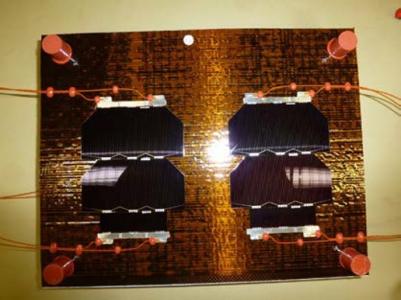High-Voltage High-Power Solar Array for Exploration Missions

Deep space exploration missions, also based on the more intensive use of electrical propulsion requires the necessity of very high power solar array. This implies the use of high voltage bus(above 300V)that requires basic research and development on solar array materials and photo-voltaic assembly configurations.
A very high power solar array concept (in the order of 50-100 KW) can be efficiently designed only using very high voltage bus concept (around and above 300 Volts). Therefore, it is mandatory to develop and test high-voltage high-power solar array technology that is not yet available. Potentially this enables direct transfer of power to the electric propulsion system without voltage conversion equipment (hence saving mass). In particular, new Photovoltaic Assembly materials and technologies are to be developed, characterised and tested at both sample and breadboard level to overcome the high-voltage problematic. In the context of the activity, the focus will be mainly given to the following aspects: Task 1:To identify and characterise the electrical properties (insulation, dielectric strength, etc.) of standard materials, (e.g. cabling, kapton, silicon adhesives, carbon fibre) and alternative material (e.g. Upilex and others) versus thickness and layout configuration Task 2:To identify probles and test possible solutions concerning the interface between High-Voltage High-Power Solar Array and Electrical Propulsion (e.g. contamination, induced shunt paths)Task 3:To identify issues and experiment preliminary solutions concerning the Electro-Static Discharge aspects relevant to the High Voltage High Power Solar Array technology (e.g. plasma interaction, sustained arc prevention technique) Task 4:To identity and master the problematic of High Voltage High Power Solar Array in terms of safety that may imply drastic changes in the manufacturing and testing flow
